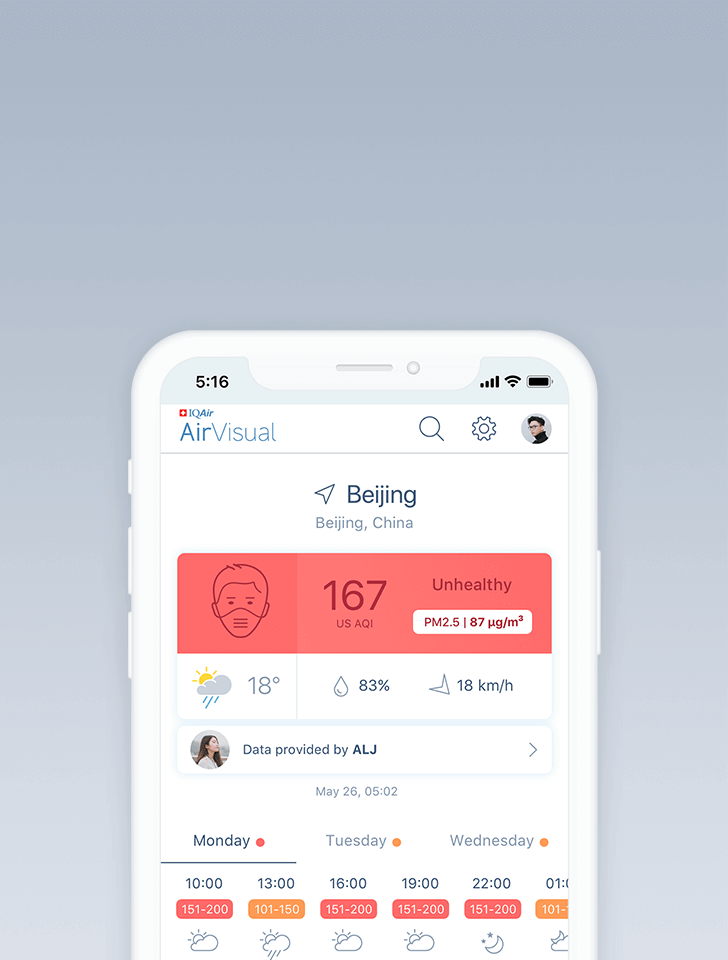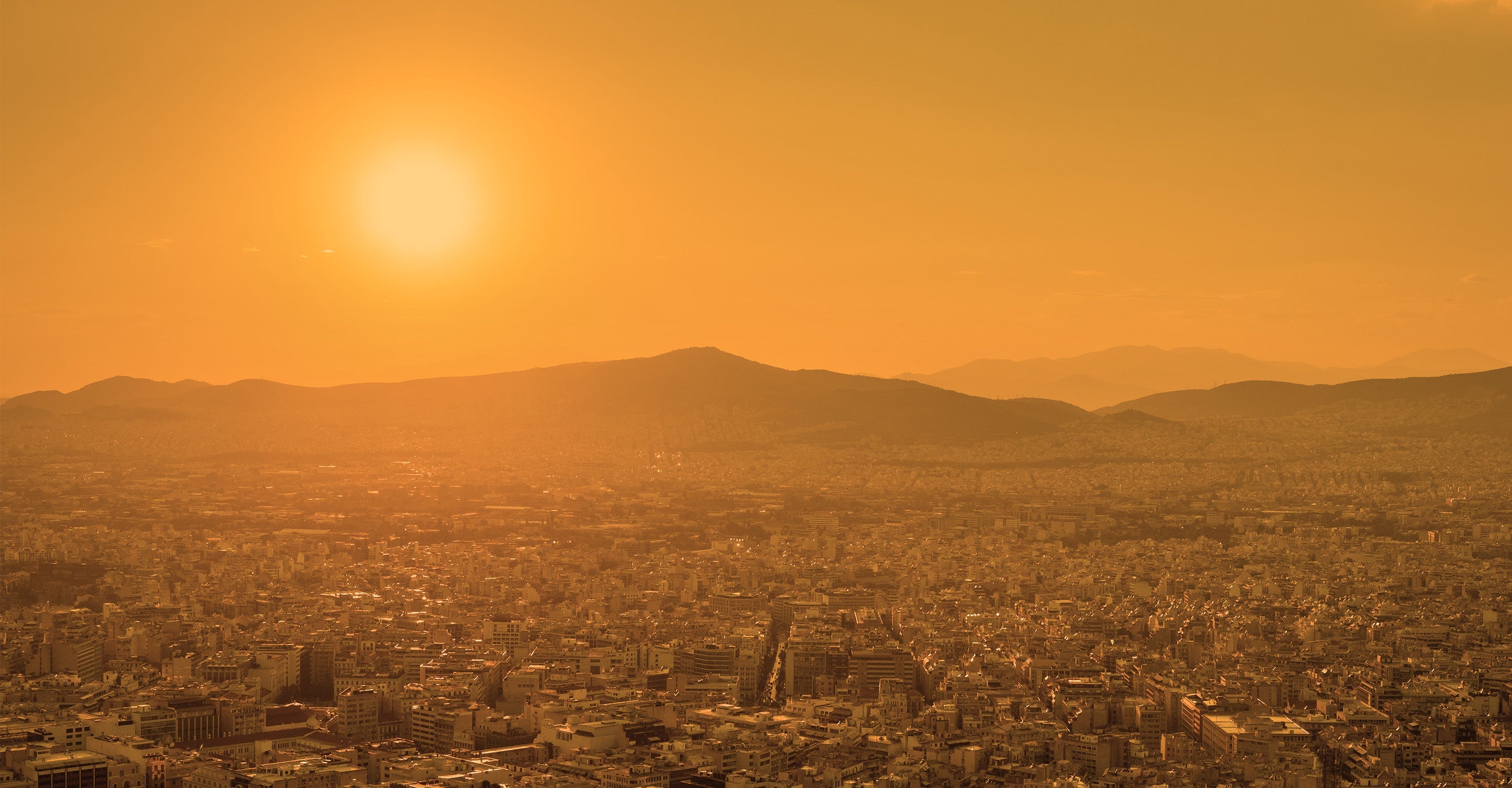Air quality in Fuyang
Air quality index (AQI) and PM2.5 air pollution in Fuyang
8.2K people follow this city

Fuyang Air Quality Map
Real-time Fuyang air pollution map
Weather
What is the current weather in Fuyang?
| Weather | Broken clouds |
| Temperature | 62.6°F |
| Humidity | 83% |
| Wind | 3.9 mp/h |
| Pressure | 29.6 Hg |
live aqi city ranking
Real-time China city ranking
| # | city | US AQI |
|---|---|---|
| 1 | Yangcun, Tianjin | 178 |
| 2 | Meishan, Sichuan | 171 |
| 3 | Tongzhou, Beijing | 170 |
| 4 | Leshan, Sichuan | 168 |
| 5 | Zigong, Sichuan | 166 |
| 6 | Jilin, Jilin | 163 |
| 7 | Chaoyang, Liaoning | 162 |
| 8 | Changchun, Jilin | 161 |
| 9 | Fangshan, Beijing | 158 |
| 10 | Jingmen, Hubei | 157 |
(local time)
SEE WORLD AQI RANKING3D animated air pollution map

live Fuyang aqi ranking
Real-time Fuyang air quality ranking
| # | station | US AQI |
|---|---|---|
| 1 | Development zone | 144 |
| 2 | City monitoring station | 139 |
| 3 | Funan County Government Affairs Center | 132 |
| 4 | Yingquan District | 132 |
| 5 | Funan County Environmental Protection Bureau | 124 |
| 6 | Fuyang Vocational and Technical College | 124 |
| 7 | City Planning Exhibition Hall | 119 |
| 8 | Zaoyuan Community | 119 |
| 9 | Puyang Vocational and Technical College | 97 |
(local time)
SEE WORLD AQI RANKINGUS AQI
124
live AQI index
Unhealthy for sensitive groups
Overview
What is the current air quality in Fuyang?
| Air pollution level | Air quality index | Main pollutant |
|---|---|---|
| Unhealthy for sensitive groups | 124 US AQI | PM2.5 |
| Pollutants | Concentration | |
|---|---|---|
| PM2.5 | 45µg/m³ | |
| PM10 | 122µg/m³ | |
| O3 | 0µg/m³ | |
| NO2 | 65µg/m³ | |
| SO2 | 8µg/m³ | |
| CO | 600µg/m³ | |
PM2.5
x9
PM2.5 concentration in Fuyang is currently 9 times the WHO annual air quality guideline value
Health Recommendations
What is the current air quality in Fuyang?
| Reduce outdoor exercise | |
| Close your windows to avoid dirty outdoor air GET A MONITOR | |
| Sensitive groups should wear a mask outdoors GET A MASK | |
| Run an air purifier GET AN AIR PURIFIER |
Forecast
Fuyang air quality index (AQI) forecast
| Day | Pollution level | Weather | Temperature | Wind |
|---|---|---|---|---|
| Tuesday, Apr 23 | Unhealthy for sensitive groups 134 AQI US | 75.2° 57.2° | ||
| Wednesday, Apr 24 | Unhealthy for sensitive groups 107 AQI US | 78.8° 53.6° | ||
| Thursday, Apr 25 | Unhealthy for sensitive groups 110 AQI US | 82.4° 57.2° | ||
| Today | Unhealthy for sensitive groups 124 AQI US | 82.4° 57.2° | ||
| Saturday, Apr 27 | Unhealthy for sensitive groups 116 AQI US | 84.2° 62.6° | ||
| Sunday, Apr 28 | Unhealthy for sensitive groups 129 AQI US | 82.4° 59° | ||
| Monday, Apr 29 | Unhealthy for sensitive groups 104 AQI US | 69.8° 59° | ||
| Tuesday, Apr 30 | Moderate 91 AQI US | 73.4° 62.6° | ||
| Wednesday, May 1 | Moderate 73 AQI US | 64.4° 51.8° | ||
| Thursday, May 2 | Moderate 67 AQI US | 71.6° 51.8° |
Interested in hourly forecast? Get the app
AIR QUALITY ANALYSIS AND STATISTICS FOR Fuyang
What is the level of air pollution in Fuyang city?
Fuyang is a prefecture-level city in north-western Anhui province, China. As such it administers eight county-level divisions, including three districts, one county-level city and four counties. According to a census conducted in 2010, the population was estimated to be 7.5 million people of which 1.7 million live in the metropolitan areas of Yingzhou, Yingdong and Yingquan. Yingzhou, Yingdong and Yingquan.
In the first few months of 2021, Fuyang was going through a period of polluted air which was classified as being “Unhealthy for sensitive groups” with a US AQI reading of 113. This is a globally recognised system that can be used as a benchmark when comparing different areas and cities. There are usually six main pollutants that are measured and used as part of an indication.
The concentration level of these six pollutants were as follows: PM2.5 - 40.5 µg/m³, PM10 - 67.5 µg/m³, ozone (O3) - 61 µg/m³, nitrogen dioxide (NO2) - 21 µg/m³, sulphur dioxide (SO2) - 6.5 µg/m³ and carbon monoxide (CO) - 750 µg/m³. It is advisable to take precautions when levels are this high, especially for those who are sensitive to poor air quality. They need to avoid venturing outside until the quality improves and close doors and windows to prevent more dirty air from entering their homes. The use of an air purifier would be advantageous if one is available. The table at the top of this page gives the most up-to-date information to help make a choice.
Is the level of air pollution in Fuyang the same throughout the year?
Air pollution is very volatile and is dependent on many variables and can change within a very short period of time. The figures for 2020 have just been published by the Swiss company IQAir.com and by studying them it can be seen that the seasons of the year play a large part in determining air quality.
By looking at the table of figures it can be seen that the quality of air falls into three sections over the year. The warmer months of summer gave the best air quality. From the start of May until the end of September Fuyang was experiencing “Moderate” air quality with readings between 12.1 and 35.4 µg/m³. Springtime during March and April saw slightly worse quality with figures of 52.1 and 39.1 µg/m³, respectively. This was classified as being “Unhealthy for sensitive groups”. The remaining five months of winter are usually much colder when solid fuel is burned to warm the homes and workplaces. From October through till the end of February the air quality was classed as “Unhealthy” with figures between 55.5 and 150.4 µg/m³.
Records of air quality in Fuyang have been kept since 2017 when the annual average was recorded as being 66.9 µg/m³. A large improvement was recorded in the following years with 54.4 µg/m³ in 2018 and 51.9 µg/m³ in 2019. Another noticeable drop was seen in 2020 with a figure of 50.4 µg/m³. This could be artificially lower because of the restrictions imposed due to the COVID-19 pandemic which restricted the movement of private vehicles and suspended some industrial activity as a means of preventing it from spreading.
What is the outlook for air quality in Fuyang?
China cut concentrations of hazardous particles known as PM2.5 by 6.5 per cent in 338 cities last year. Smog-prone northern regions also met 2013-2017 air quality targets after a winter campaign to cut industrial output, coal consumption and traffic. People are living longer and older people are more susceptible to the diseases most closely linked to air pollution. The major causes of death in China are from stroke, heart attack, and lung cancer.
Authorities should also focus on the countryside, where indoor pollution caused by direct fuel combustion is responsible for more than a third of total annual deaths. Inhaling fumes from the indoor burning of coal or biomass for cooking and heating is associated with higher rates of chronic obstructive pulmonary disease in rural areas.
Where does the polluted air in Fuyang come from?
Scientists have found a new offender contributing to China’s notorious wintertime smog, and controlling it could help sustain the significant improvements in air quality that Beijing and other north-eastern cities experienced last winter. It has been reported that emissions of formaldehyde which is principally from vehicles and chemical and oil refineries played a larger role than previously understood in producing the thick, toxic pollution that chokes much of the country each winter. A large portion of the sulphur in the haze was the result of a chemical reaction between formaldehyde and sulphur dioxide released by burning coal. In order to improve air quality, it has been suggested that targeting emissions of formaldehyde in vehicles and industrial refining would help reduce the sulphur levels.
The number one source of pollution is industrial emissions. Many factories and production units rely on coal as their source of power. Very few of them have effective dust removal and desulphurisation measures. Pollutants are directly discharged at low altitude, which has a serious impact on the local environment.
The second-largest source of pollution is secondary dust due to the demolition and reconstruction in many urban areas. The cleaning rate of road machinery is low, the transportation of bulk powder-like substances does not use closed or covered vehicles, and the phenomenon of losing layers of powder along the road is serious.
The third is that the major pollution source is motor vehicle exhaust. As with all metropolises, there are far too many vehicles plying for places on the city’s roads each of them churning out fumes as they idle across the city.
What effect does poor air quality have on our health?
Even healthy people can experience health impacts from polluted air including respiratory irritation or breathing difficulties during exercise or outdoor activities. Your risk of adverse effects depends on your existing health condition, the pollutant type and concentration, and the length of your exposure to the polluted air.
High levels of air pollution can have immediate effects such as aggravated cardiovascular and respiratory illnesses. Breathing dirty air puts a great strain on the heart and lungs which have to work much harder in order to continue the much-needed amount of oxygen to the bloodstream. Permanent damage can occur to the lining of the respiratory tract which is difficult for the body to repair.
Fuyang air quality data attribution
Where is the cleanest air quality in Fuyang?
- Puyang Vocational and Technical College 97
- City Planning Exhibition Hall 119
- Zaoyuan Community 119
- Funan County Environmental Protection Bureau 124
- Fuyang Vocational and Technical College 124
- Funan County Government Affairs Center 132
- Yingquan District 132
- City monitoring station 139
- Development zone 144





